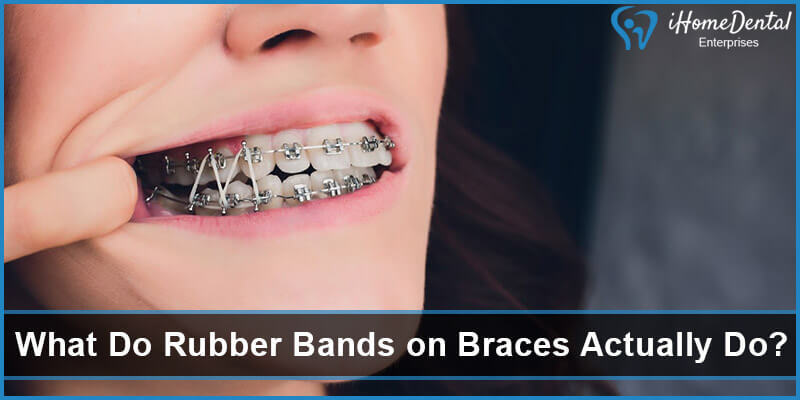
Braces can be a great option for the adjustments of teeth in many children and teens. Many orthodontists use rubber braces to provide you a straight and healthy smile. Although these braces need some time to get used to them, many people need extra force to make the adjustments in their teeth to get proper alignment. For such people, a number of orthodontic treatments are required. Braces are the first and foremost step to be done.
It is being said that the braces rubber bands, which are also called elastics, are the crucial part to straighten and align the teeth and jawline. It also helps you provide individual tooth movement. Not only this, these braces are attached with the help of rubber bands on your teeth to provide you proper stretching and flexibility of mouth. The same is the case with the brackets, which are fixed with rubber bands,
But I have heard many people asking, what do these rubber bands actually do on braces?
If you also hold the same common question, you are in the right place. With the help of this article, you can give some good benefits of rubber bands on braces if someone asks you the same question.
So let’s discuss.
Why are there Rubber Bands on Braces?
Rubber bands are also known as elastics by orthodontists because these rubber bands have much elasticity, just like a common rubber band. It is used to help in numerous orthodontic treatments such as braces and brackets. However, these rubber bands are essential to braces. These elastics work by fixing into the wire portion of braces that are attached to teeth. Afterward, these bands are used to adjust the jaw location and eventually the entire bite.
Sometimes, you might have seen braces fixed in the mouth without elastics. But many people need rubber bands in order to adjust the pressure on them. To regulate the deficiencies in your bite, the orthodontist may fox rubber bands when required.
Benefits of Rubber Bands on Braces
Rubber bands are required to braces to pronounce the overbites and underbites since the brackets and archwires actually do not fix such problems. As the archwires do not link the lower and upper jaws, so they either cannot realign them. They are directly below and above each other; that’s why rubber bands are used.
Below are some benefits and reasons what rubber bands actually do on braces:
∎ Adjust the Bite
Appropriate orthodontic treatment helps improve your child’s bite, which results in an improvement in their speech. The rubber bands adjust the bite by connecting the lower and upper teeth and inserting stress in the required direction. It also helps in adjusting the overbites, underbites, and other orthodontic problems.
∎ Help to Move Teeth
The major benefit of rubber bands on braces is that they provide an additional force and help you move your teeth into a certain position. Usually, people who wear braces independently without the fixture of elastics are unable to move their teeth freely. Hence, rubber bands work as a tool that helps you create more accurate stress and pressure on your teeth.
∎ Accelerate Alignment Process
Another benefit of rubber bands on braces is that they help in boosting the alignment process through which your child can get a bright and confident smile very soon.
Winding Up
So, do you have the problem of misaligned teeth? You can quickly decide to hurry your dentists and ask for the right approach for managing your imperfect teeth and bite. Make an appointment with a professional orthodontist about braces and bring a bright and confident smile. It not only boosts your outer appearance but helps enormously in biting food and speech as well.
Head to some FAQs for a clearer understanding.
FAQs
- What are these rubber bands made of?
Most of the rubber bands are made from natural latex material. This material is chosen very consciously to keep oral hygiene and considered safe. Still, if you hold any doubts, you may talk directly to your dentist.
- How can I use rubber bands on braces?
Take good care of your rubber bands to keep your mouth hygienic and effective results. Since these rubber bands are braces that are very tiny in size, they are more likely to carry small food particles, therefore, brush your teeth regularly from every area n=inside your mouth, do flossing and mouthwash at least once a day. Also, use protective mouth guards if required.
- How do these rubber bands work?
Rubber bands on braces work by linking the upper and lower teeth to each other. Then these elastic put stress on the desired jaw to relocate them. It enhances the meeting of your bite and helps your chew food easily.





Leave a Reply